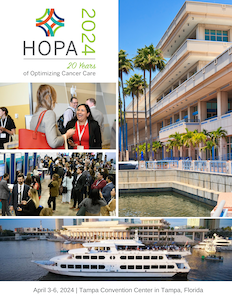Back
Trainee Research
Category: Malignant Hematology
(198) Real World Experience of Breakthrough Invasive Fungal Infections on Isavuconazole vs. Posaconazole in Malignant Hematology Patients
Friday, April 5, 2024
12:00 PM – 2:00 PM ET

Lauren Bivacca, PharmD, MBA
PGY2 Oncology Pharmacy Resident
UF Health Shands Hospital
Gainesville, Florida, United States
Presenting Author(s)
Poster Abstract:
Background:
Prolonged and profound neutropenia often caused by certain treatments for hematologic malignancies is a significant risk factor for invasive fungal infections (IFIs), which remains a major cause of mortality in this patient population. Primary prophylaxis is the main strategy for preventing IFIs, and current guidelines recommend prophylaxis with posaconazole as the standard of care for IFI prevention in patients with acute myeloid leukemia (AML) and myelodysplastic syndromes (MDS) receiving myelosuppressive chemotherapy or in allogeneic stem cell transplant. As an alternative mold-active antifungal, isavuconazole has also been implemented in clinical practice for prophylaxis due to its ease of dosing, limited need for drug level monitoring, and favorable side effect profile. Although prophylaxis with one of these agents has reduced the overall incidence of IFIs, breakthrough invasive fungal infections (bIFIs) have increasingly been described in the literature. However, the incidence of bIFIs varies widely based on antifungal agent used, local epidemiology, and patient characteristics.
Objective(s):
The objective of this study is to describe and compare the incidence of bIFIs in malignant hematology patients receiving either isavuconazole or posaconazole for prophylaxis therapy.
Methods:
This is a single center, retrospective cohort study. Chart review will be conducted for all eligible patients aged 18 years or older with a hematologic malignancy that were admitted to this institution between July 1, 2022 and July 31, 2023 and received 7 or more consecutive days of either isavuconazole or posaconazole for prophylaxis of fungal infections. Patients receiving an antifungal agent for definitive treatment only of fungal infections during this time period will be excluded. The clinical features and risk factors for bIFIs in this patient population will be assessed.
Results:
Results to be presented.
Discussion/
Conclusions:
Conclusions to be presented.
References (must also be included in final poster): 1. NCCN Guidelines. Prevention and Treatment of Cancer-Related Infections. Version 1.2023.
2. Lionakis MS, Lewis RE, Kontoyiannis DP. Breakthrough Invasive Mold Infections in the Hematology Patient: Current Concepts and Future Directions. Clin Infect Dis. 2018;67(10):1621-1630.
3. Nguyen MH, et al. Real-World use of Mold-Active Triazole Prophylaxis in the Prevention of Invasive Fungal Diseases: Results from a Subgroup Analysis of a Multicenter National Registry. Open Forum Infectious Diseases. 2023. 1-24.
4. Hong JY, Kang CI, Yang J, et al. Breakthrough invasive fungal infection in patients with myeloid malignancy receiving posaconazole tablet prophylaxis: Clinical features, risk factors, and posaconazole profiles. Med Mycol. 2023;61(5):myad046.
5. Tverdek FP, Heo ST, Aitken SL, Granwehr B, Kontoyiannis DP. Real-Life Assessment of the Safety and Effectiveness of the New Tablet and Intravenous Formulations of Posaconazole in the Prophylaxis of Invasive Fungal Infections via Analysis of 343 Courses. Antimicrob Agents Chemother. 2017;61(8):e00188-17.
6. Rausch CR, DiPippo AJ, Bose P, Kontoyiannis DP. Breakthrough Fungal Infections in Patients With Leukemia Receiving Isavuconazole. Clin Infect Dis. 2018;67(10):1610-1613.
Background:
Prolonged and profound neutropenia often caused by certain treatments for hematologic malignancies is a significant risk factor for invasive fungal infections (IFIs), which remains a major cause of mortality in this patient population. Primary prophylaxis is the main strategy for preventing IFIs, and current guidelines recommend prophylaxis with posaconazole as the standard of care for IFI prevention in patients with acute myeloid leukemia (AML) and myelodysplastic syndromes (MDS) receiving myelosuppressive chemotherapy or in allogeneic stem cell transplant. As an alternative mold-active antifungal, isavuconazole has also been implemented in clinical practice for prophylaxis due to its ease of dosing, limited need for drug level monitoring, and favorable side effect profile. Although prophylaxis with one of these agents has reduced the overall incidence of IFIs, breakthrough invasive fungal infections (bIFIs) have increasingly been described in the literature. However, the incidence of bIFIs varies widely based on antifungal agent used, local epidemiology, and patient characteristics.
Objective(s):
The objective of this study is to describe and compare the incidence of bIFIs in malignant hematology patients receiving either isavuconazole or posaconazole for prophylaxis therapy.
Methods:
This is a single center, retrospective cohort study. Chart review will be conducted for all eligible patients aged 18 years or older with a hematologic malignancy that were admitted to this institution between July 1, 2022 and July 31, 2023 and received 7 or more consecutive days of either isavuconazole or posaconazole for prophylaxis of fungal infections. Patients receiving an antifungal agent for definitive treatment only of fungal infections during this time period will be excluded. The clinical features and risk factors for bIFIs in this patient population will be assessed.
Results:
Results to be presented.
Discussion/
Conclusions:
Conclusions to be presented.
References (must also be included in final poster): 1. NCCN Guidelines. Prevention and Treatment of Cancer-Related Infections. Version 1.2023.
2. Lionakis MS, Lewis RE, Kontoyiannis DP. Breakthrough Invasive Mold Infections in the Hematology Patient: Current Concepts and Future Directions. Clin Infect Dis. 2018;67(10):1621-1630.
3. Nguyen MH, et al. Real-World use of Mold-Active Triazole Prophylaxis in the Prevention of Invasive Fungal Diseases: Results from a Subgroup Analysis of a Multicenter National Registry. Open Forum Infectious Diseases. 2023. 1-24.
4. Hong JY, Kang CI, Yang J, et al. Breakthrough invasive fungal infection in patients with myeloid malignancy receiving posaconazole tablet prophylaxis: Clinical features, risk factors, and posaconazole profiles. Med Mycol. 2023;61(5):myad046.
5. Tverdek FP, Heo ST, Aitken SL, Granwehr B, Kontoyiannis DP. Real-Life Assessment of the Safety and Effectiveness of the New Tablet and Intravenous Formulations of Posaconazole in the Prophylaxis of Invasive Fungal Infections via Analysis of 343 Courses. Antimicrob Agents Chemother. 2017;61(8):e00188-17.
6. Rausch CR, DiPippo AJ, Bose P, Kontoyiannis DP. Breakthrough Fungal Infections in Patients With Leukemia Receiving Isavuconazole. Clin Infect Dis. 2018;67(10):1610-1613.

